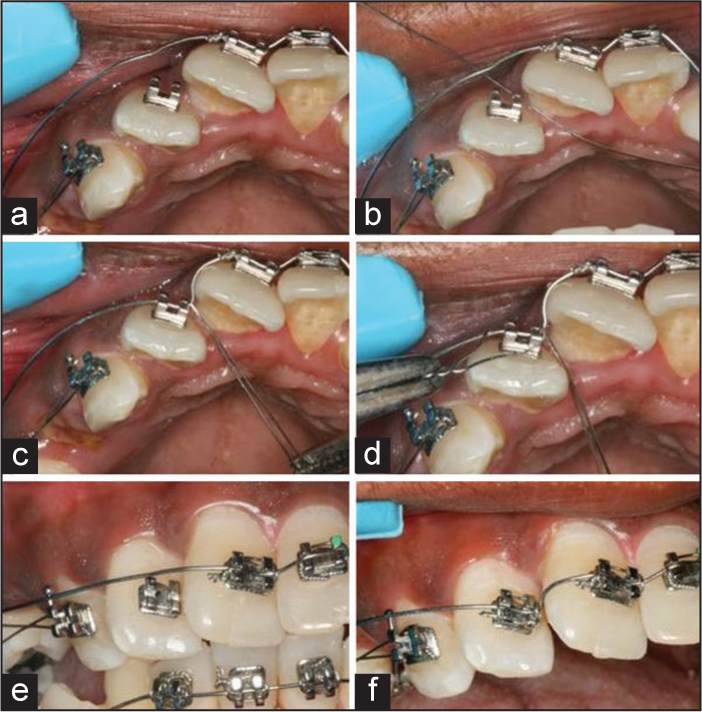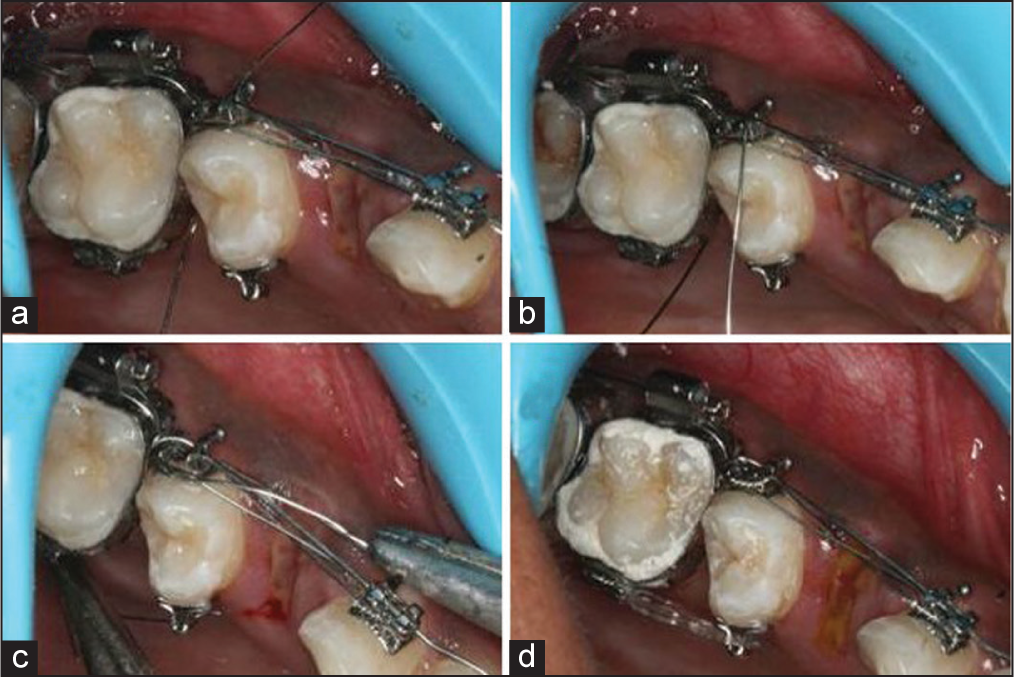Translate this page into:
A simple ligation technique for rotated tooth
Address for correspondence: Dr. Abhishek Bansal, Department of Orthodontics, Vaidik Dental College and Hospital, Nani Daman, 396210, U.T. India. E-mail: ashi142002@yahoo.co.in
This article was originally published by Wolters Kluwer and was migrated to Scientific Scholar after the change of Publisher.
Abstract
Ligation of the severely rotated teeth at the start of the treatment is time consuming and difficult, even with super-elastic archwires. This article describes a quick and easy method of seating an archwires into the bracket slot for initial alignment.
Keywords
Alignment
ligation
rotated
INTRODUCTION
One of the properties of ideal archwire ligation system is that it should ensure full bracket engagement of the archwire.[1] A complete or a near complete engagement of wire in the bracket slot would ensure proper and faster alignment of teeth. Engaging the archwire into the bracket in a severely rotated tooth [Figure 1a and e] is one of the problems frequently encountered in day-to-day clinical practice. If adjacent teeth are overlapping, it is challenging to completely seat the archwire into the slot even with flexible initial wires (NiTi wires) for alignment.

- 0.009″ stainless steel ligature wire is used to engage the archwire in the bracket slot and is ligated into the bracket of a rotated lateral incisor. (a-d) Occlusal view. (e and f) Frontal view
Here we introduce a new, simple and easily performable technique for complete seating of archwire into the bracket slot of a severely malposed/rotated tooth.
The technique requires simple and readily available armamentarium listed as follows:
A pair of Mathew’s forceps or artery forceps.
Ligature wire.
TECHNIQUE
A piece of ligature wire is passed through the interproximal contact of the rotated lateral incisor [Figure 1b]. Next the labial portion of the ligature wire is passed over the incisor side of the archwire with the Mathew’s forceps [Figure 1c]. Both ends of ligature wire are pulled from the palatal side. This helps complete seating of the archwire into the bracket slot [Figure 1d]. Now the operator can easily ligate the archwire into the bracket slot [Figure 1d and f]. This technique works equally well with posterior teeth [Figure 2a-d].

- ligature wire is used to engage the archwire in the bracket slot and is ligated into the bracket of a rotated premolar. (a-d) Occlusal view
Advantages
Disadvantages
Takes time initially, might require an assistant for help.
If heavy force applied, the bracket might be debonded.
CONCLUSION
Based on the above study it can be concluded that this technique can help the clinician achieve the objective of rotation correction faster, without any extra effort and also offers the benefit of significant reduction in chair side time.
References
- Evaluation of methods of archwire ligation on frictional resistance. Eur J Orthod. 2004;26:327-32.
- [Google Scholar]






